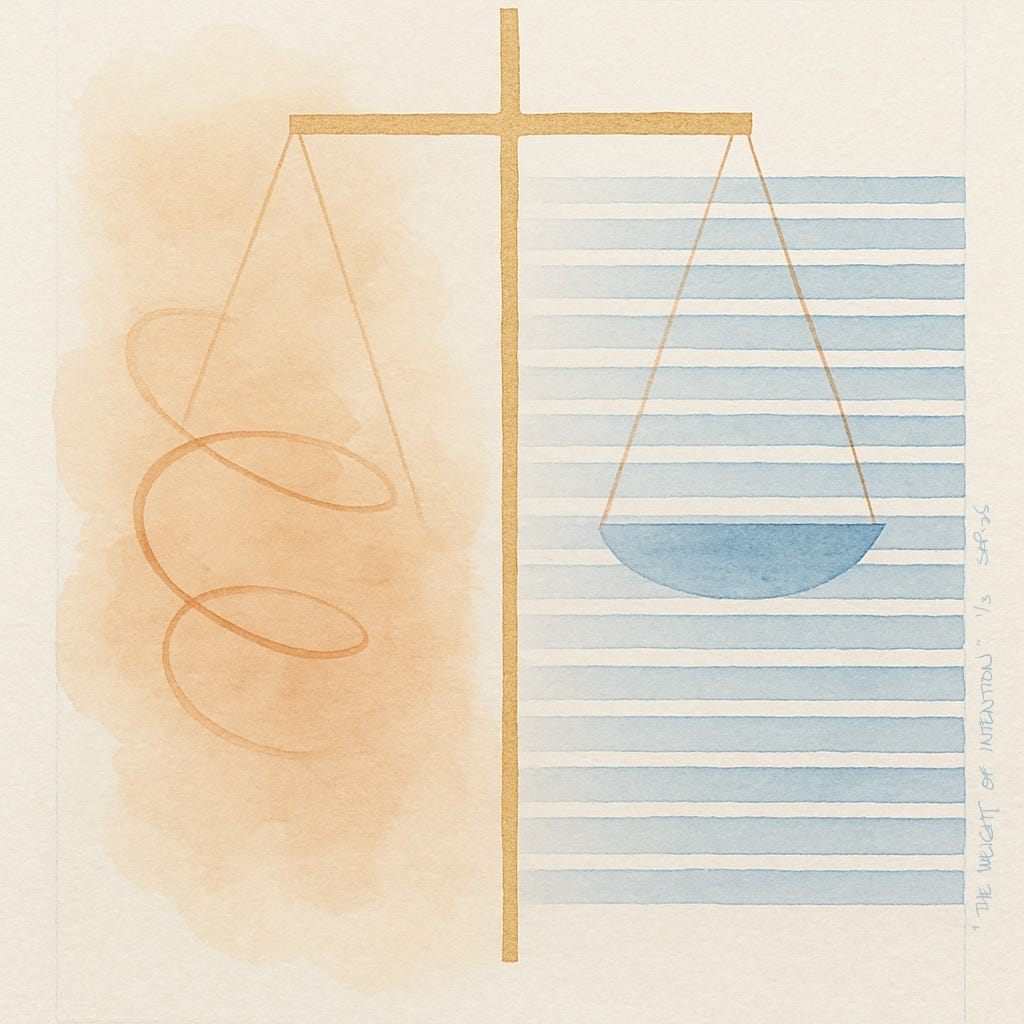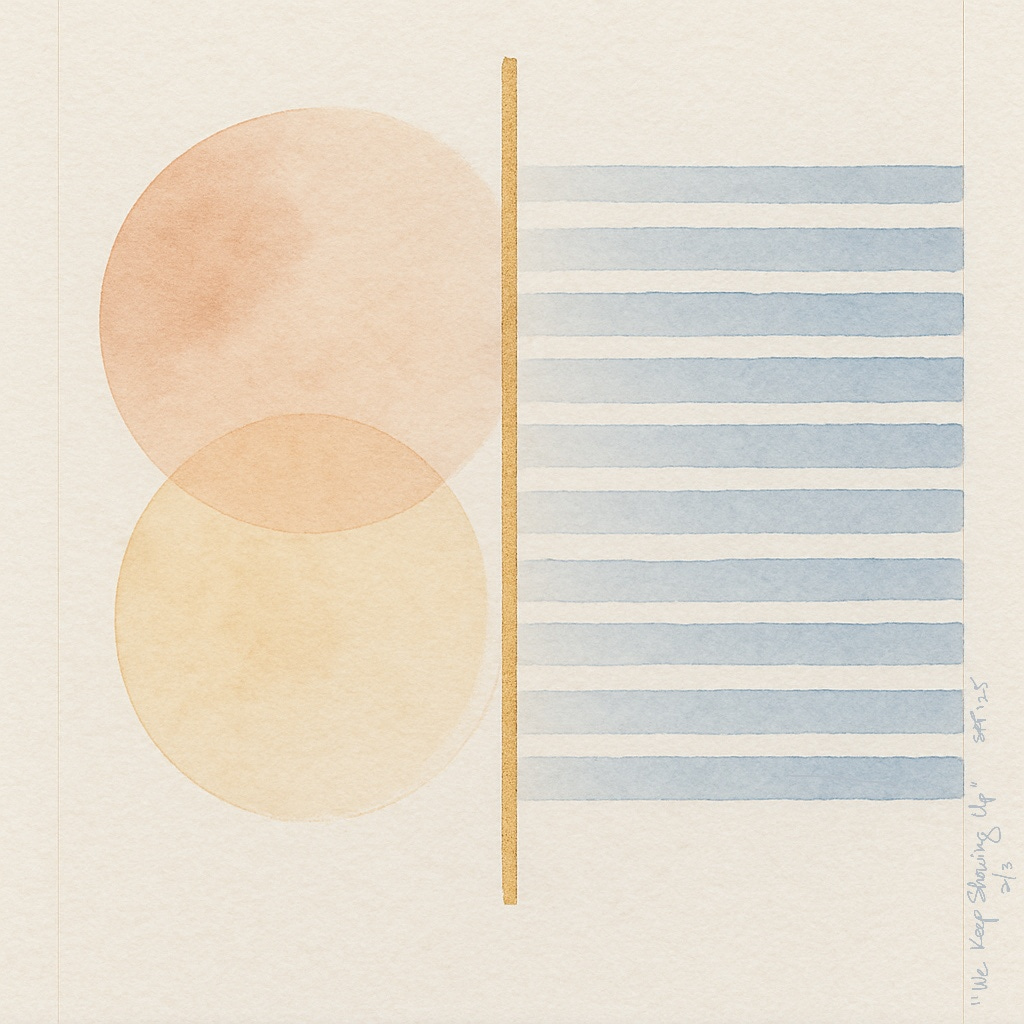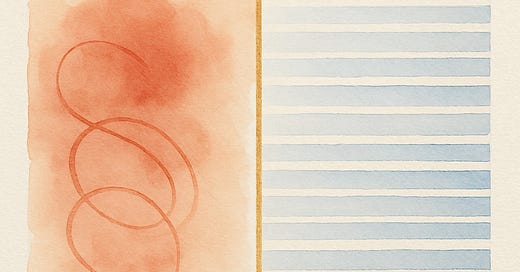Have you ever noticed how “bad’ behavior just gets away with being bold and unapologetic, while goodness feels like it’s constantly on trial?

It’s one of those weird ironies in life that’s hard to ignore. Evil marches ahead with no explanation needed. Meanwhile, when someone tries to be kind or honest, it’s like the world’s waiting for them to explain themselves, or waiting for the honest person to mess up…
I’ve been thinking a lot about why this is, in this world of ours. Why does the bad get to skate by without justifying itself, but doing good has to prove itself over and over again?
I’ve noticed this pattern not just in headlines or history, but in the quietness of human care, where sincerity sometimes feels like it walks a tightrope, and kindness isn’t always trusted.
There’s something curious about the work we do as clinical musicians. We go into hospital rooms with no spotlight, no applause, and no certainty that what we’re doing will even be welcomed. We offer something small and quiet — music, comfort, presence — and hope that it helps.
But we don’t always know if it does. We don’t always get clear outcomes. Staff smile and whisper their passing thanks, but no one fills out a form to say, “Yes, the music mattered.” Sometimes we see tears. Sometimes we see stillness. We might even need to stop. The moments are fleeting, delicate, or even confusing.
But we keep showing up.
That, to me, is one of the hardest and most honest things about this work, and about any work that involves trying to help others. It’s not glamorous. It’s not always clear. And it rarely feels enough. We’re constantly navigating uncertainty, hoping that what we’re offering is the right thing, or at least not the wrong thing.

And here’s what I’ve also noticed: people are sometimes quick to question this kind of caring. Because trust is fragile. When someone is in pain, they’re cautious about letting others in. Perhaps they don’t want to be seen as someone to be fixed. And after all, how many times have good intentions been wrapped around manipulation, judgment, or ego?
Trying to do something kind might be met with skepticism. People look for signs that it’s performative or insincere. And honestly? They have every reason to be wary.
It’s as if kindness is placed on a weighted scale, its merit scrutinized line by line, while cruelty floats by unchecked.
One wrong note (literal or metaphorical) and the whole connection can fall apart. That’s the tension we live in as CTMs.
And yet… that’s what makes this work feel real.
Trying to help others isn’t a one-time thing. There’s no moment where you earn the “good person” badge and move on. It’s a daily practice. It’s walking into rooms again and again, knowing full well that your offering might not land. That you might be misunderstood. That you might be met with silence, or resistance, or pain.
But still, you tune your harp. You breathe. You play.
Because even if it’s uncertain, it matters.
Not in a grand, world-saving way. But in a small, human way. A way that says: you’re not alone. I’m here. And I’ll keep showing up.
That’s the real heart of this work. Not virtue. Not trying to earn angel’s wings. Just the ongoing, imperfect effort to be kind in a world that often makes that hard.

Watercolors:
“The Weight of Intention” 1/3
The weight of intention. The ease of disregard.
Gold justice scales are abstract but unmistakable. The blue side, meant to symbolize care, effort, and scrutiny, is filled with evidence. The left, in warm red-orange hues, floats mockingly empty: a suggestion of how evil is often granted freedom without burden. The composition is meant to represent how kindness must work harder to be heard.
I didn’t want to tip the scales. I liked that my scales suggested a cross, not as a statement, but as a symbol of care, sacrifice, and the weight we carry when we choose to show up.
Art doesn’t have to obey physics. I kept the balance level, aligned with the horizontal lines — not because the world is fair, but because part of me doesn’t want to admit how unfair it really is. Maybe I need that symmetry, in a moment of stillness where effort is seen, where intention carries weight — even if only in paint.
“We Keep Showing Up” 2/3
Faith and presence.
The soft, warm overlapping circles on the left suggest presence, breath, and the gentle offering of care, like harp tones in a quiet hospital room. They are imperfect and overlap without clarity, representing emotional ambiguity. On the right, the structured blue lines suggest our routines, expectations, or the discipline of returning despite doubt. The gold line stands as a threshold, suggesting the invisible divide between being and being recognized.
There’s a kind of invisible bravery in simply being there. In the small, persistent act of presence. The soft, warm circles speak to how fragile that presence can feel, like breath on glass, like music that disappears the moment it’s played.
These aren’t gestures that demand certainty. They don’t always come with clarity or outcome. But they come anyway. And in that repetition, that decision to return, is a kind of devotion. A gentle insistence on care in a world that doesn’t always know what to do with it.
On the right, the lines don’t just symbolize order or expectation, they could also be the notes we hit over and over, or the chord structure we lay down, or the routines we build to steady ourselves. There’s comfort there. Ritual to anchor.
The gold threshold stands between ambiguity and structure — suggesting the connection, the offering, the silence that holds it all, the choice to try again.
“The Uneven Trial” 3/3
One flows without question. The other is measured line by line.
This painting is meant to communicate the asymmetry between bold wrongdoing and accountability or good deeds. One side moves freely, unburdened by consequence or doubt, with swirling spirals that are loose and uncontained. In contrast, the structured linear blue side represents virtue: examined, tested, and repeatedly justified. The gold line in this painting is meant as the illusion of fairness.
This piece is difficult, because it tries to name something we often feel but don’t want to admit: the world is not equally demanding of all intentions. Some forces move through life unchecked, unbothered. Others are interrogated at every turn. These may feel more rewarding, but they require more work.
The spirals on the left are bold, messy, unrepentant — they don’t ask permission. Meanwhile, on the right, everything is organized, linear, boxed in. The blue lines resemble rules, expectations, questions. It’s a kind of negotiation, to prove that care is real, that good isn’t a trick.
And that illusion of fairness, the gold line down the middle, might be the hardest part. Because it lets us pretend the scales are balanced. That every action is measured equally. But we know by walking through life that’s not always true. Maybe not even often…
And still, in the face of that imbalance, people try. That’s what stands out to me, not just the tension, but the refusal to abandon effort. To represent the good in the world, especially when people need support. To keep showing up.
Post Note:
For those interested in the deeper philosophical framework behind these reflections, my article “Navigating Dialectics in Therapeutic Musicianship: Balancing Artistry, Presence, and Purpose” appears in the Harp Therapy Journal, Vol. 30, No. 2 (Summer 2025 Edition).
In that piece, I write about how Certified Therapeutic Musicians navigate inherent tensions in their work and how embracing these dualities, rather than resolving them, can lead to growth, compassion, and resilience.
The watercolor series in this Substack essay echoes that same terrain: the imbalance and fragile weight of good intentions, and the quiet insistence of showing up, even when nothing is certain.
Where the HTJ article brings in Hegelian dialectics and Dr. Marsha Linehan’s work on radical acceptance, this series offers a different lens, a visual meditation on care, ambiguity, and the quiet labor of presence.
Both works circle the same question: how do we hold tension with grace?


